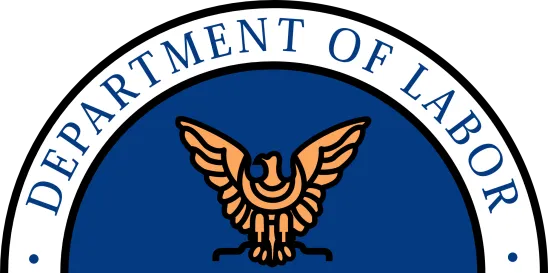On Oct. 11, 2022, the U.S. Department of Labor (DOL) announced the long-awaited proposed rule on independent contractor classification. A year later, after an extended public comment period, the proposed rule has finally been submitted to the White House Office of Management and Budget (OMB), indicating that the release of the final rule is imminent. OMB review is the final step in the rulemaking process.
While the precise contours of the final rule are not yet known, it is worth reexamining the proposed rule as it is unlikely that the final rule will contain significant changes. The proposed rule would impose a six-factor “economic reality test,” all of which would be equally weighted and would look broadly at the “totality of the circumstances” to determine whether a worker is an independent contractor or employee under the Fair Labor Standards Act. According to the DOL, the proposed rule is designed to reveal whether workers are, as a matter of “economic reality,” “economically dependent” upon the employer or are in business for themselves. Permeating the proposed rule is the DOL’s apparent view that an independent contractor should be entrepreneurial in nature. At least four of the six factors look for entrepreneurial or business initiative, skill or acumen – i.e., opportunity for profit or loss; investment by the worker; the control factor; and skill and initiative.
Proposed Six-Factor “Economic Realities” Test
The proposed rule provides six factors. However, the DOL notes that “additional factors” may also be considered where applicable to underscore the notion that the six enumerated factors should not be mechanically applied and that “economic reality” is what matters, not labels or formalities. The DOL explains that under this proposed rule, the analysis should be fluid in order to assess the reality of the relationship in its totality, with no one factor receiving greater weight.
The six factors, which are to be viewed holistically, are:
-
Opportunity for profit or loss depending on managerial skills.
-
This factor analyzes whether business skills, such as marketing efforts, affect economic success or failure, including ability to negotiate job pay and/or timing of work.
-
This factor also looks at whether the contractor hires other workers or rents office space.
-
-
Investments by the worker and the employer.
-
This factor analyzes investments by the worker that are capital or entrepreneurial in nature, not simply costs for tools or equipment to do a job.
-
For those in the “gig economy,” the proposed rule states that “the use of a personal vehicle that the worker already owns to perform work – or that the worker leases as required by the employer to perform work – is generally not an investment that is capital or entrepreneurial in nature,” because it is often used for personal reasons too.
-
The proposed rule also explains that a worker’s investment should be compared on a relative basis to the business’s investment, and where the worker’s investment does not compare favorably, employment status is likely.
-
-
Degree of permanence of the work relationship.
-
This factor notes that indefinite or continuous work relationships generally are evidence of employment, whereas sporadic and short-term project work is indicative of contractor status.
-
However, the DOL states that temporary or short-term work is not necessarily indicative of contractor status if it does not result from an independent business initiative.
-
The DOL also notes that such lack of permanence may simply be a result of temporary or seasonal work, which does not necessarily imply contractor status.
-
-
Nature and degree of control.
-
This factor analyzes the businesses' ability to control scheduling, supervision, and prices or rates. This factor further looks to the worker’s ability to work for other businesses as well.
-
The proposed rule also notes that supervision may be imposed through the use of technology (i.e., tracking or remote monitoring), and need not be in-person, direct supervision.
-
Moreover, interestingly, the DOL also notes that a business’s “compliance with legal obligations, safety or health standards, or requirements to meet contractual or quality control obligations, for example, may in some cases indicate that the employer is exerting control, suggesting that the worker is economically dependent on the employer.”
-
-
Extent to which the work performed is an integral part of the employer’s business.
-
This factor analyzes whether the work is critical, necessary, or central to the business – where the work performed is integral to the business, employment status is more likely.
-
The key question is whether the work performed is central to the business, not whether the quality of the worker “render them indispensable as an individual.”
-
-
Specialized skill and initiative.
-
This factor analyzes whether the worker is taking business-like, entrepreneurial initiative to advance his or her independent business, rather than being dependent on an employer.
-
The DOL notes that if the worker is dependent on training from the business to perform the work, employment status is more likely; whereas if the worker possesses specialized skills and demonstrates entrepreneurial judgment, contractor status is more likely.
-
Current “Core Factors” Test
In contrast, the current rule, promulgated in 2021, prescribes a five-factor test to guide the analysis, two of which are designated as “core factors” carrying more weight in the inquiry: 1) nature and degree of control over the work, and 2) the worker’s opportunity for profit or loss. Under the core factor test, if these two factors point in the same direction toward independent contractor status, then it is likely that the worker is properly classified as an independent contractor (and vice versa). The DOL explains in the Notice of Proposed Rulemaking that the current rule is to be repealed.
The DOL’s proposed rule is significantly more nuanced and will result in less definitive answers to the question of whether independent contractors are properly classified. With less clarity comes the likelihood of more opportunity for courts (or the DOL) to find that the “totality” weighs in favor of an employment relationship. Indeed, with the advent of the “gig economy” over the last few years, the DOL has made independent contractor classification a priority. As we near the launch of this final rule, businesses that utilize independent contractors should consider reviewing these relationships.




 />i
/>i

